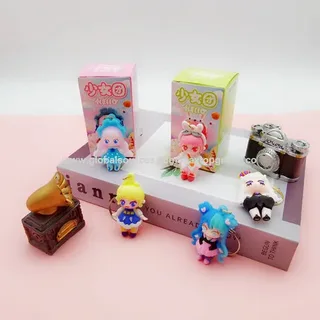In recent years, blind boxes have taken the consumer market by storm. From collectible toys to mystery beauty products, the allure of not knowing exactly what’s inside has captivated millions. But what is it about these mysterious packages that keeps people coming back for more? In this article, we will explore Unboxing the Surprise: The Psychology Behind Blind Boxes, diving into the emotional and cognitive triggers that make this trend so addictive.
What Are Blind Boxes?
Blind boxes are sealed packages containing an unknown item from a set of possible collectibles. Buyers have no idea which item they will receive until they open the box. This uncertainty is central to the blind box experience and is a major factor in why these products are so appealing.
The Thrill of Anticipation
One of the key psychological elements at play in blind boxes is anticipation. Humans are wired to find excitement in the unknown. When someone purchases a blind box, the mystery of what lies inside creates a suspenseful build-up that heightens the emotional reward when the box is finally opened.
This thrill is similar to what gamblers feel when placing bets or players experience in loot box mechanics in video games. The brain releases dopamine, a neurotransmitter associated with pleasure, during moments of uncertainty and eventual reward, which reinforces the desire to keep buying blind boxes.
The Appeal of Collecting and Completion
Another important psychological factor is the collector’s drive. Many blind boxes come as part of a series or set, motivating buyers to keep purchasing in the hopes of completing their collection. The desire for completion taps into the brain’s need for order and mastery, creating a powerful incentive to continue the search.
This ties directly into Unboxing the Surprise: The Psychology Behind Blind Boxes, where the combination of mystery and collection fuels a continuous engagement cycle. The emotional highs of acquiring a rare or coveted item amplify the attachment to the blind box experience.
Social Influence and Community Engagement
Beyond individual psychology, blind boxes often foster a sense of community. Fans share their unboxing experiences on social media, swap items to complete their sets, and engage in discussions about rare finds. This social validation enhances the emotional payoff and creates a culture around the product.
Through this lens, Unboxing the Surprise: The Psychology Behind Blind Box also reveals the social dynamics that add an extra layer of enjoyment to the phenomenon.
Conclusion
The popularity of blind boxes is no accident. By tapping into human desires for anticipation, collection, and social connection, these products have created a compelling and addictive experience. Understanding the psychology behind blind boxes helps explain why people find joy in mystery and how brands successfully leverage this to keep consumers coming back.
Next time you see a blind box on the shelf, remember the fascinating psychology at play when you decide to take the plunge and unbox the surprise.

